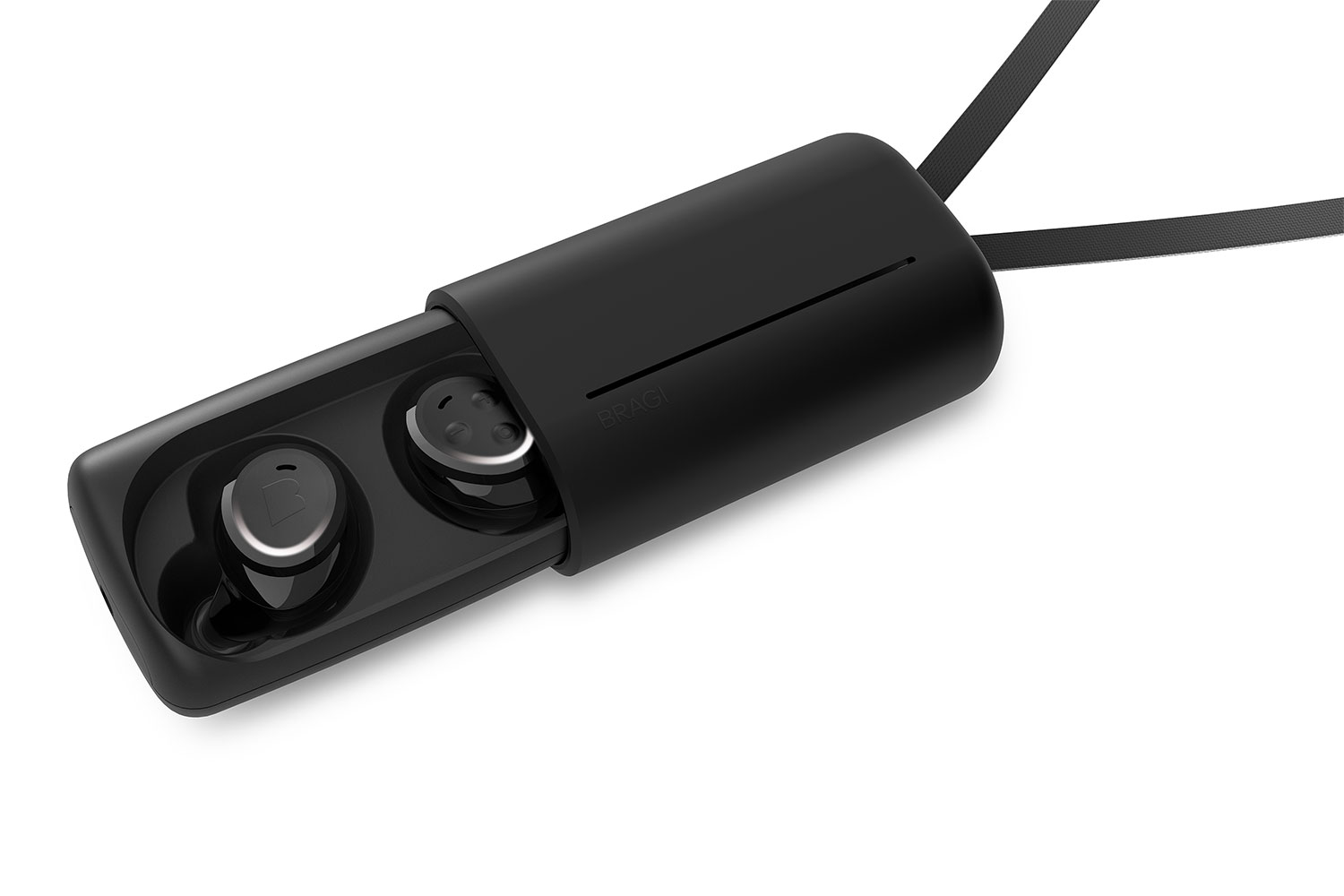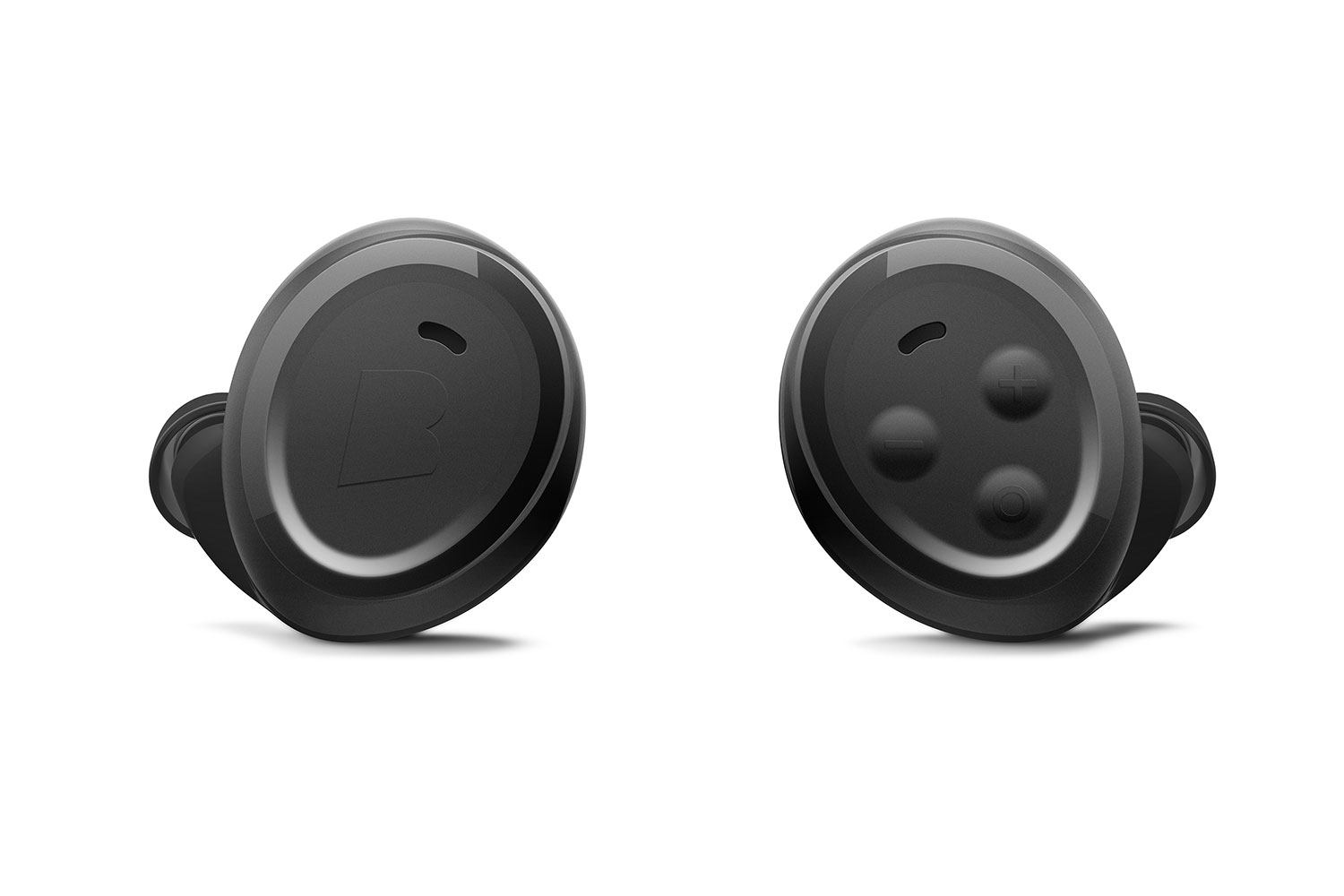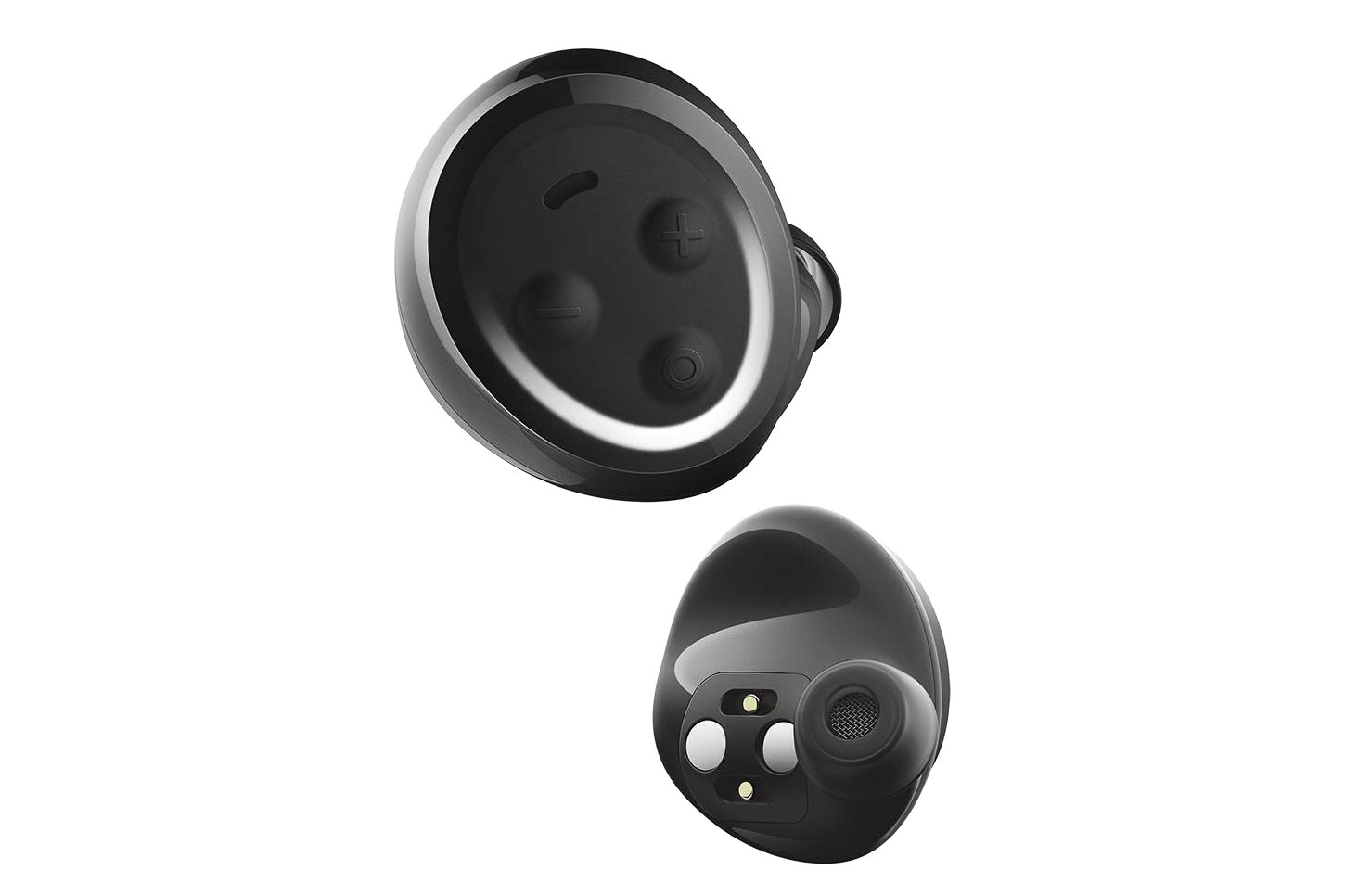Bragi, the crowdfunded German startup that created the fully wireless Dash earbuds, has unveiled its second major product in the world of autonomous buds. Called simply (and a bit ostentatiously) The Headphone, the new buds may not look much different than the original Dash, but they do have a secret weapon: double the battery life, for around six hours of play time.
If you’re not familiar with the Dash, they’re much more than just wireless buds. Loaded to the gills with tech and features, Bragi refers to the feature-packed earbuds as “hearables.” They allow users to trigger actions with gestures — nodding your head will answer a call, for instance. And thanks to a pile of sensors, Dash can also track your activities, your heart rate, and much more. All of those wiles, as you might guess, put a strain on the battery, which is why the Dash (and most other wireless earbuds) come with a case that will charge the buds while you’re on the go.
But what if you just want to jam some tunes wire-free? That’s where The Headphone comes in.
IFA 2016: Sony’s new MDR-1000X noise-canceling headphones are its best yet
“The Dash is more like a computer,” Bragi CEO Nikolaj Hviid told Digital Trends. “When we did the Kickstarter project, there were a lot of people that asked for something that was not as insane, that was less pricy than the Dash … While Dash is more precise, the Headphone is more fun to listen to.”
The Headphone’s supercharged battery doesn’t just outlast its sibling either. It also outdoes the batteries of most of its rivals in the space, including the Eratu Apollo 7 and the Earin wireless buds, both of which tap out at three hours of playtime per charge.
The Headphone accomplishes the feat by using the same Near Field Magnetic Induction technology (NFMI) that’s in the Dash — the right earbud connects to your phone via Bluetooth and then sends the left side of the audio to the left bud via ultra-low latency magnetic fields. The magnetic fields use very little power, which allows for longer battery life, low latency, and audio quality that Bragi says is “as good or better” as Bluetooth or Wi-Fi solutions.
The Headphone doesn’t just play music, either. The buds steal a few features from the Dash, such as Audio Transparency, which lets you trickle in ambient sounds from your environment. The buds can also take calls, understand voice commands, and come with a carrying case that’s also a lanyard.
As Hviid says, the six hour number is an “industry-leading” claim for truly wireless earbuds. And perhaps just as importantly The Headphone is also available for pre-order at less than half the cost of the Dash’s $300 price point, and most others in the space, at just $119.
As for sound performance, Hviid describes the sound has having a “nice depth to it,” with smooth mids and highs. Inside, The Headphone sports balanced armature drivers from the Knowles Corporation. While we had our issues with with the original Dash, the sound performance was extremely impressive for a pair of wireless buds.
Bluetooth-connected earbuds are notorious for having mediocre audio quality, and Hviid understands that, even admitting that Bragi’s latest is “not an audiophile headphone.”

That said, The Headphone is part of a much larger trend in the headphone world, as more and more listeners turn to the convenience of wire-free listening. “You’ll see a huge transition next year from cord to wireless,” Hviid said. “I think corded headphones are going to be a niche product for high-end headphones … [the transition] will go faster than people believe.”
The transition is being helped along, in part, due to more and more smartphone manufacturers removing the long-standing 3.5mm headphone jack — Motorola removed it from two of its flagship products in the Moto Z line, as did LeEco for three of its smartphones. And on September 7, it’s expected that Apple will reveal the iPhone 7 without a traditional headphone jack, as well.
It’s no coincidence that Bragi’s announcement comes days ahead of Apple’s iPhone 7 announcement. There has been plenty of resistance to rumors surrounding the removal of the headphone jack, and Bragi is striking while the iron is hot.
“The Headphone can be connected to any Bluetooth device, including the much-anticipated, (hotly rumored to be) headphone-jack free iPhone 7,” the company writes in its press release.
Bragi OS 2.1 updates
While The Headphone is today’s big news, Bragi isn’t ignoring its flagship product. The Dash is receiving its second major software update since January 2016, Bragi OS 2.1 (available for Android, iOS, and Windows Phone).
Bragi says the upgrade will make Bluetooth connectivity “faster and better.” Other features include a new shuffle setting for the internal music player, on-demand heart-rate tracking, and the Dash assistant will be able to speak four new languages: Chinese, French, German, and Spanish. In addition, a new feature called Touch Lock is designed to help prevent random gestures from triggering actions on the Dash.
If you’re a fitness buff, you’ll be happy to know that the Dash now syncs with Google Fit and Apple Health Kit.
Dash owners can download the 2.1 update via Bragi’s Desktop Updater here.
As for The Headphone, pre-orders start today on Bragi’s website at $119, good until November 1. If you were a backer of the Dash on Kickstarter, you’ll also get a $20 coupon for The Headphone via email. The Headphone will retail at $149 in November.









